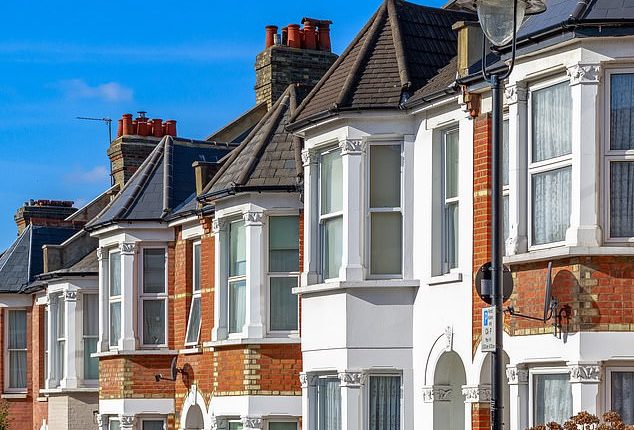
Hundreds of thousands of mortgage holders may have to fork out up to £2,000 per year extra due to falling house prices.
The Bank of England’s staff blog – Bank Underground – said if property prices declined sharply many borrowers would find themselves pushed into higher loan-to-value ratios (LTVs).
This is the size of the loan as a percentage of the value of the property. When house prices fall, the ratio can increase.
The warning came from Danny Walker, a senior adviser to the Bank of England’s deputy governors, and Foreign Office deputy chief economist Fergus Cumming.
Mortgages with higher LTVs, when the loan makes up a large part of the value of a property, are usually more expensive for borrowers. If house prices decline by 10 per cent from the peak reached last year, as many as 350,000 mortgage holders could be pushed into higher and more expensive LTV bands.

Downward trend: If property prices declined sharply many borrowers would find themselves pushed into higher loan-to-value ratios
These borrowers could see mortgage repayments increase by as much as £2,000 per year on average, the report said.
This would pile further pressure on household budgets already strained by inflation and previous increases to the Bank of England base rate, which has climbed to 5.25 per cent from 0.1 per cent in December 2021.
Walker and Cumming warned that the additional financial pressure on borrowers could have a ‘material impact on the economy’.
House prices boomed during the pandemic as a stamp duty holiday introduced by Rishi Sunak when he was Chancellor sparked a surge in purchases.
But following sharp interest rate hikes from the Bank of England this trend has gone into reverse amid the rising cost of mortgages, with the Office for Budget Responsibility (OBR) predicting that prices will fall by 7.6 per cent by the end of 2024 from a peak reached late last year.
Mortgage costs also show little sign of returning to pre-pandemic levels, with the OBR noting that interest rates are expected to remain at their current levels for longer.
Governor Andrew Bailey has received criticism for not raising rates quickly enough to stop inflation hitting a four-decade high of 11.1 per cent last October. An investigation by the House of Lords, published last week, said the Bank must undergo ‘vital’ reforms to avoid a repeat of its failure to prevent a surge in inflation.









